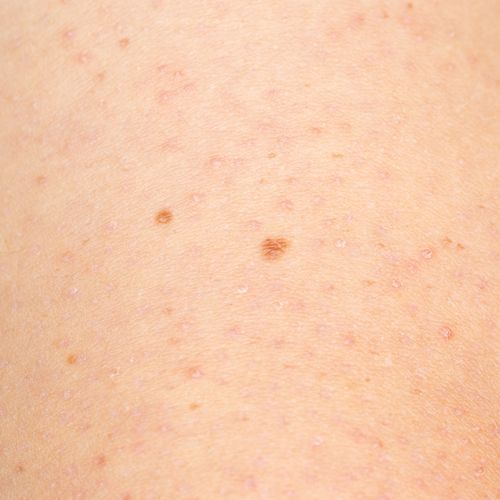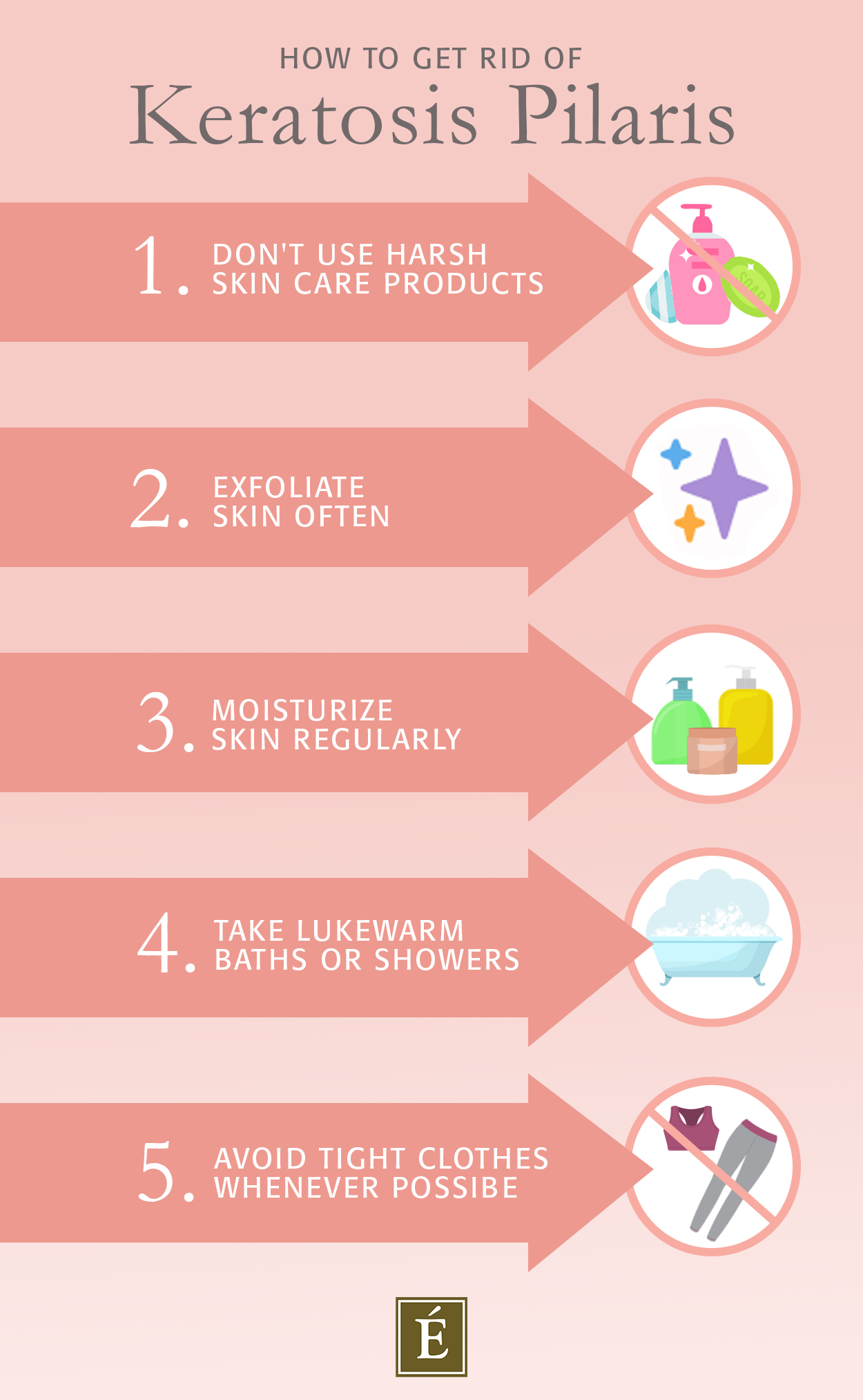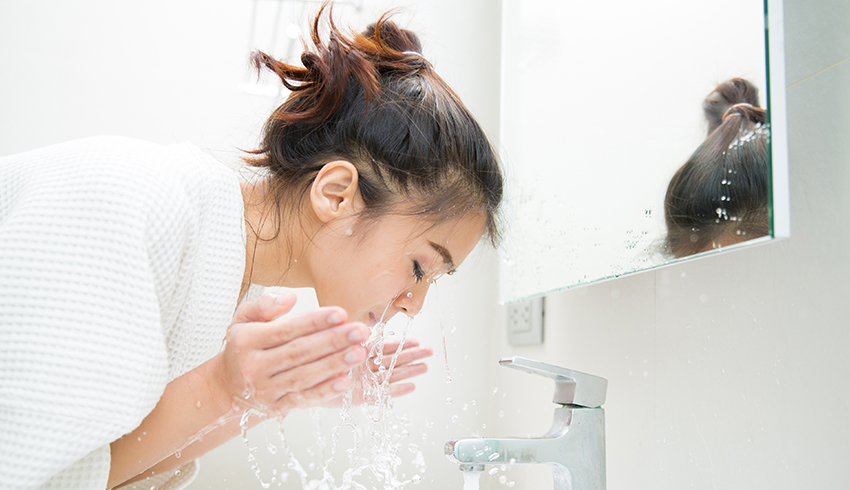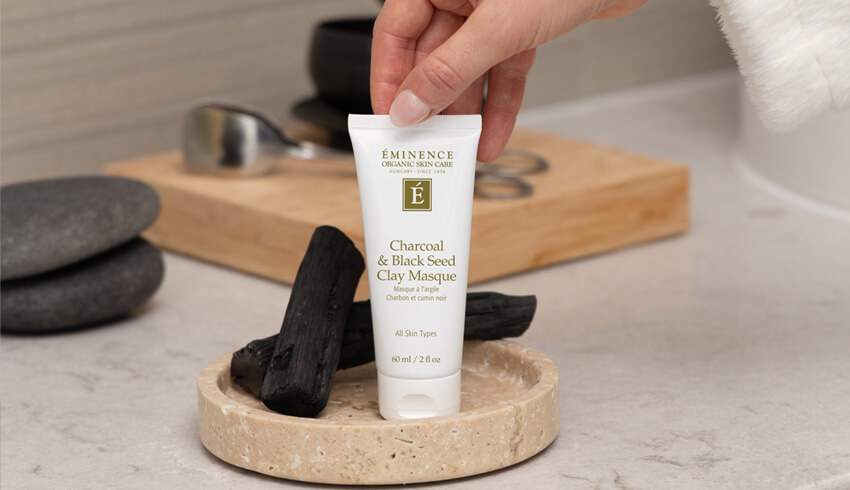
Bumpy, dry and textured patches – a trifecta of things you don’t want when it comes to skin.
If you’ve noticed tiny bumps or rough patches of skin on the backs of the arms (or other areas of the body, such as the legs or face), you’re not alone. This skin condition, known as keratosis pilaris, is relatively common (albeit aggravating), but here’s some good news: you don’t have to live with bumpy skin forever.

What Is Keratosis Pilaris and What Causes It?
Keratosis pilaris is a very common and painless skin condition. These small red bumps and dry patches are often described as “chicken skin” because of the way it looks and, depending on the time of year, could worsen during drier months due to a lack of humidity in the air.
What causes keratosis pilaris? It’s basically a result of keratin buildup at the opening of the hair follicle. A crucial protein found in the epidermis of the skin, keratin is essential in that it offers skin cells protection against infection. When keratin buildup occurs, it forms a plug blocking hair follicles and results in textured, red and bumpy skin associated with keratosis pilaris.
When keratin buildup occurs, it forms a plug that blocks hair follicles and results in textured, red and bumpy skin associated with keratosis pilaris.
Dermatologists aren’t completely sure why it happens, but some things are for sure when it comes to keratosis pilaris causes: Dry weather, hormonal changes and predisposition to skin conditions like atopic dermatitis are all culprits.
Differences Between Keratosis Pilaris, Acne & Milia
When you notice these rough, dry patches or little red bumps on your skin, it might be cause for concern. However, don’t stress – keratosis pilaris isn’t painful, and there’s no burning or itching associated with the condition.
Often mistaken for other skin issues such as acne or milia, there are actually key differences between keratosis pilaris and other common skin concerns. Acne is caused when dead skin cells and oil bond together in hair follicles, leading to the development of bacteria and inflammation. Milia, on the other hand, occurs when a buildup of cells or keratin is trapped under the skin and not specifically the hair follicle. Points of distinction between milia and keratosis pilaris? Keratosis pilaris tend to present as small red bumps which cover a broader area of skin (like arms or legs) with tiny bumps or dry patches, while milia are white or yellow bumps which generally develop on the chin, nose and cheeks.

How To Get Rid of Keratosis Pilaris
With a consistent skin care plan, your chicken skin can be a thing of the past. Here’s how to get rid of keratosis pilaris:
Don’t Use Harsh Skin Care Products
When you have keratosis pilaris, your skin is already feeling dry and rough – no need to make things worse with harsh ingredients. Instead, use calming and nourishing products in your bathing and skin care routine. Facial Recovery Oil can be used anywhere on the body and features gentle and pure ingredients like clary sage oil and olive oil.
Exfoliate Often
Prevent dead skin buildup by exfoliating regularly. Use products containing natural exfoliants – such as sugar or salt scrubs – which gently slough away dry skin without causing irritation. A loofah or sponge is another great way to buff away dead skin cells for daily exfoliation. For the face, incorporate a physical exfoliant containing lactic acid or other alpha hydroxy acids – these types of exfoliants enhance texture while sloughing away dead skin.
Take Lukewarm Baths or Showers
Hot water is harsh for the skin as it strips natural oils and exacerbates dryness. Instead, use lukewarm water to activate skin care products, cleanse pores and maintain balance with skin oils.
Moisturize Regularly
After your bath or shower, seal in hydration by applying moisturizer to the face and body. Because keratosis pilaris is linked to dry skin, keeping hydrated is key to managing and alleviating keratosis pilaris. One of our favorites is the Mangosteen Body Lotion which not only hydrates the skin but also resurfaces with its unique Lactic Acid Complex.
Avoid Tight Clothes
Friction caused by close-fitting clothes can further irritate the skin because it disrupts the skin’s natural barrier against inflammation and bacteria. It also causes skin to become dry, increasing the risk of buildup and blocked pores. Packing away those tight jeans could be a wise move when you’re battling keratosis pilaris.
Visit a Skin Care Professional
If you’re not seeing any improvement, it’s time to go professional. Contact an esthetician or a dermatologist who will help you clear up the issue if you’re not seeing any improvement within a few weeks.
An important note: Managing keratosis pilaris means staying consistent with a routine! Once you stop taking steps to reduce the appearance of keratosis pilaris, the condition often returns. In order to target keratosis pilaris – and continue to keep it at bay - make sure you check in with your Eminence Organics Spa Partner for a virtual consultation or an in-spa visit.
Find out more from our Lead Skin Care Trainer Natalie Pergar about how to get rid of Keratosis Pilaris:
Have you spotted these types of bumps on your body or face? Let us know how you deal with this skin care concern in the comments below or share with us on social media.


